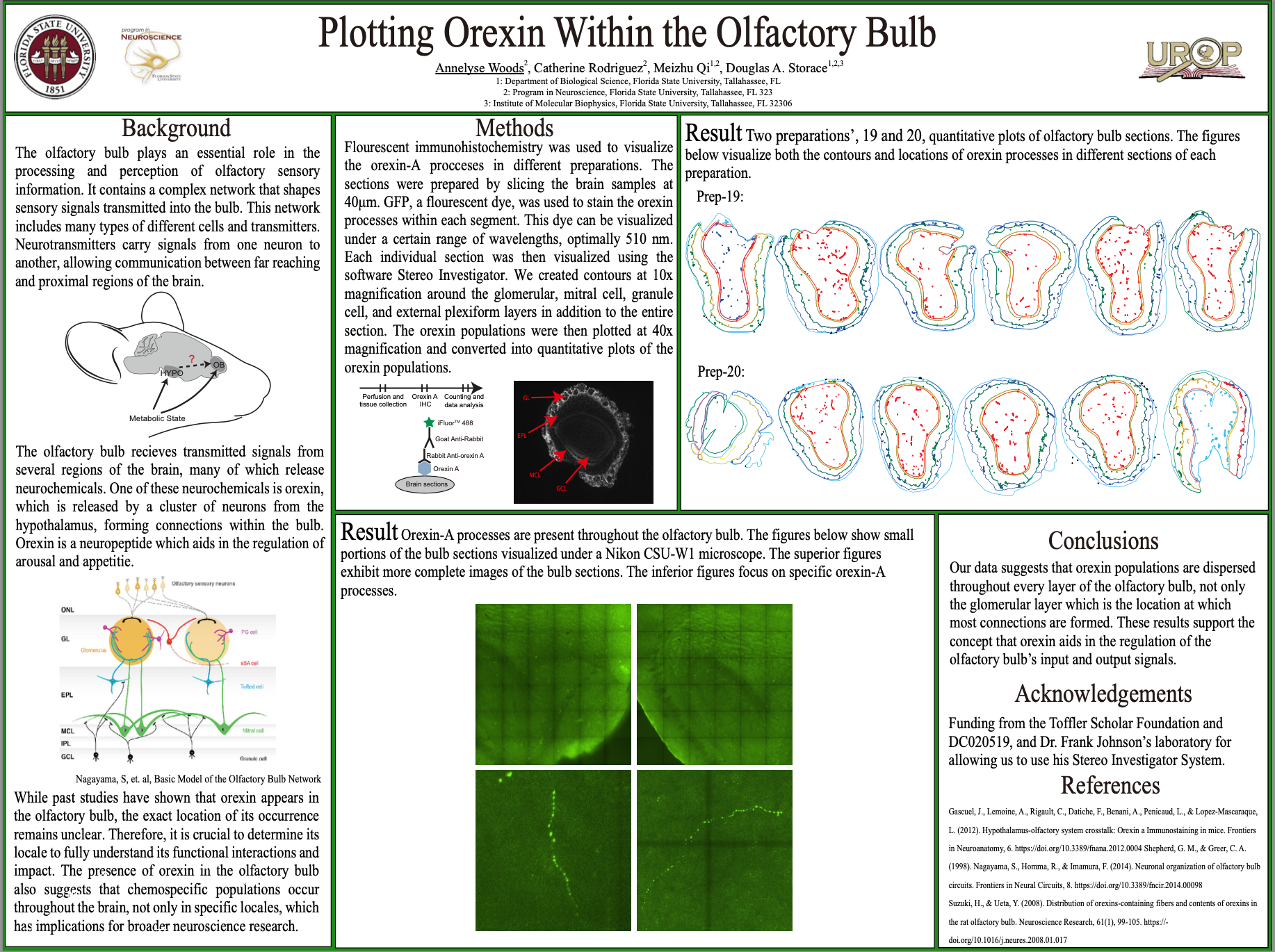Research Symposium
23rd annual Undergraduate Research Symposium, April 6, 2023
Annelyse Woods Poster Session 4: 4:00 pm - 5:00 pm/ Poster #37

BIO
Hello! My name is Annelyse Woods and I am currently a sophomore majoring in Cell and Molecular Neuroscience and minoring in Chemistry. I am on the pre-medical track and am very excited to continue researching throughout my time at Florida State University. I am from McLean, Virginia, which is right outside of Washington D.C.. I am incredibly interested in the functions and processes involved between different regions of the brain.
Plotting Orexin Within the Olfactory Bulb
Authors: Annelyse Woods, Douglas StoraceStudent Major: Cell and Molecular Neuroscience
Mentor: Douglas Storace
Mentor's Department: Department of Biological Science, Program in Neuroscience Mentor's College: College of Arts and Sciences Co-Presenters:
Abstract
The olfactory bulb is a primary structure involved in the processing of olfactory sensory information. The bulb contains a complex network of input ORN axons which work together to shape sensory signals transmitted into the bulb. This network includes interneurons, containing granule cells, and projection neurons, containing mitral and tufted cells. This variety of cell types working cooperatively is essential to the functions and processes involved within the bulb. Furthermore, the reception of signals from other regions of the brain that release a diverse array of neurochemicals, one of which is orexin. Orexin is a neuropeptide that is released by a cluster of neurons stemming from the hypothalamus forming connections throughout the brain, including the bulb. In past studies Orexin has shown that it is directly correlated with bodily functions arousal and appetite. In this study, c57bl/6j mice were used in which orexin was visualized using immunohistochemistry. The brain samples were sliced at 40 μm and the florescent dyes DAPI and GFP were used to stain the cells within the segments. The orexin populations were visualized after being observed under a florescent microscope, accurately mapping the frequency and glomerular locales within the mouse bulb. This mapping has indicated many glomerular populations throughout the bulb. Past studies show that orexin appears in the bulb, however the exact location was unclear hence why it is essential to determine this. The presence of orexin in the bulb also assumes that chemospecific populations occur throughout the brain instead of only specific locations.
Keywords: Orexin, Olfactory, Neuropeptide, Neuroscience, Expression


